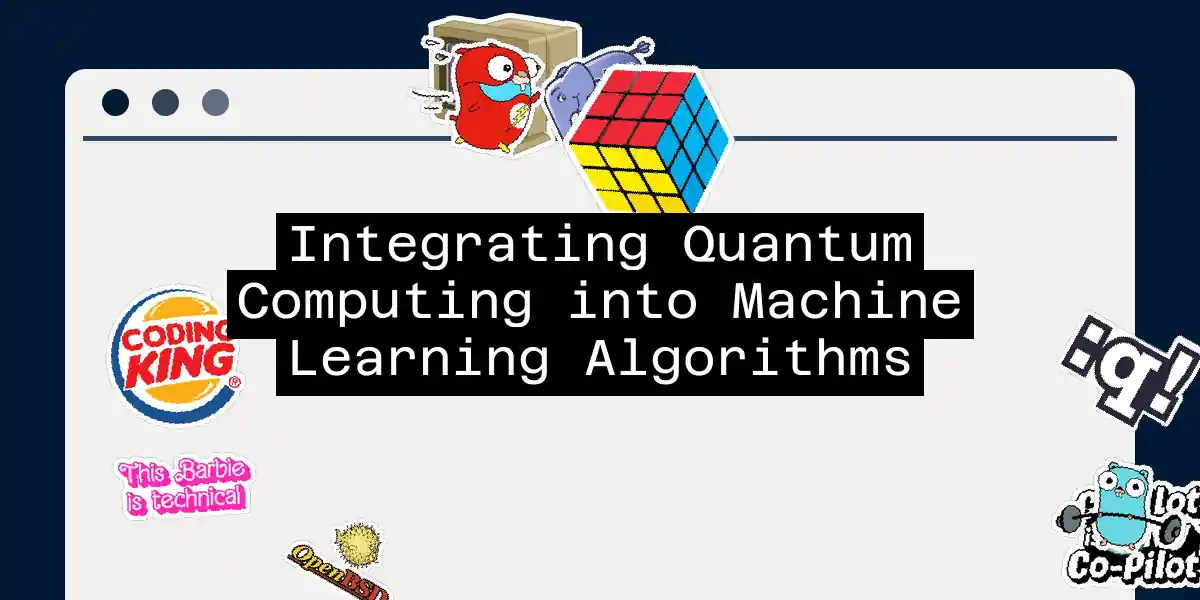Introduction to Quantum Computing and Machine Learning
Quantum computing and machine learning are two of the most exciting and rapidly evolving fields in technology today. While machine learning has been revolutionizing how we process and analyze data, quantum computing promises to take this to the next level by leveraging the principles of quantum mechanics. In this article, we’ll delve into the fascinating world of integrating quantum computing into machine learning algorithms, exploring the potential benefits, challenges, and practical steps to get you started.
What is Quantum Computing?
Quantum computing is a multidisciplinary field that combines aspects of computer science, physics, and mathematics to utilize quantum mechanics for computational purposes. Unlike classical computers, which use bits to represent information as 0s and 1s, quantum computers use qubits (quantum bits) that can exist in multiple states simultaneously due to superposition and entanglement.
Machine Learning: A Brief Overview
Machine learning is a subset of artificial intelligence that enables computers to learn from data without being explicitly programmed. It involves training models on datasets to make predictions or decisions. Machine learning is crucial in various industries, including healthcare, finance, marketing, and transportation, where it is used for image recognition, natural language processing, fraud detection, and more.
The Intersection of Quantum Computing and Machine Learning
The integration of quantum computing and machine learning is an area of significant interest and research. Quantum computers can potentially enhance machine learning algorithms in several ways:
Efficient Data Processing: Quantum computers can process large datasets more efficiently than classical computers. This is particularly useful for machine learning tasks that involve complex data analysis and pattern recognition.
Optimization: Quantum algorithms can solve optimization problems more effectively, which is crucial in machine learning for tasks like model training and hyperparameter tuning.
Speedup in Training Models: Quantum computers can speed up the training of certain machine learning models, such as k-means clustering and support vector machines, by leveraging quantum parallelism.
Practical Steps to Integrate Quantum Computing into Machine Learning
1. Understanding the Basics of Quantum Computing
Before diving into the integration, it’s essential to understand the basics of quantum computing. This includes concepts like qubits, superposition, entanglement, and quantum gates.
2. Choosing the Right Quantum Algorithm
Several quantum algorithms have been proposed to enhance machine learning tasks. Some notable ones include:
- Quantum k-Means: A quantum version of the k-means clustering algorithm that can be faster than its classical counterpart for certain datasets.
- Quantum Support Vector Machines (QSVM): A quantum version of SVM that can speed up the training process by leveraging quantum parallelism.
3. Implementing Quantum Machine Learning
To implement quantum machine learning, you can use various frameworks and libraries. Here are a few popular ones:
- Qiskit: Developed by IBM, Qiskit is an open-source framework for quantum computing that includes tools for quantum machine learning.
- TensorFlow Quantum: A library developed by Google that integrates TensorFlow with quantum computing capabilities.
Here’s a simple example using Qiskit to create a quantum circuit:
from qiskit import QuantumCircuit, execute, Aer
# Create a quantum circuit with 2 qubits and 2 classical bits
qc = QuantumCircuit(2, 2)
# Apply quantum gates
qc.h(0) # Hadamard gate on qubit 0
qc.cx(0, 1) # CNOT gate on qubits 0 and 1
qc.measure([0, 1], [0, 1])
# Run the circuit on a simulator
simulator = Aer.get_backend('qasm_simulator')
job = execute(qc, simulator)
result = job.result()
print(result.get_counts(qc))
4. Handling Noise and Error Correction
One of the significant challenges in quantum computing is noise and error correction. Quantum computers in the NISQ (Noisy Intermediate-Scale Quantum) era are prone to errors due to the noisy nature of qubits. To mitigate this, you need to implement error correction techniques and use noise-resilient algorithms.
Challenges and Future Directions
While the integration of quantum computing and machine learning holds great promise, there are several challenges to overcome:
- Noise and Error Correction: As mentioned, noise is a significant issue in current quantum computers. Developing robust error correction techniques is crucial for practical applications.
- Scalability: Currently, quantum computers are not scalable to the extent required for many machine learning tasks. Advancements in hardware are needed to increase the number of qubits and reduce noise.
- Quantum-Classical Interoperability: Seamlessly integrating quantum and classical systems is essential for practical applications. This includes developing frameworks that can efficiently communicate between quantum and classical components.
Conclusion
The integration of quantum computing and machine learning is a fascinating and rapidly evolving field. While there are challenges to overcome, the potential benefits are substantial. By understanding the basics of quantum computing, choosing the right algorithms, and implementing them using available frameworks, you can start exploring the exciting possibilities of quantum machine learning.
As we continue to push the boundaries of what is possible with quantum computing and machine learning, we are not just enhancing our computational capabilities but also opening up new avenues for innovation and discovery. So, buckle up and join the quantum revolution – it’s going to be a wild ride!
